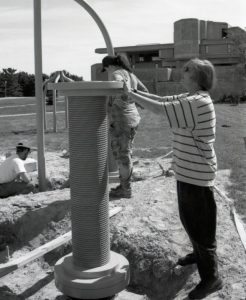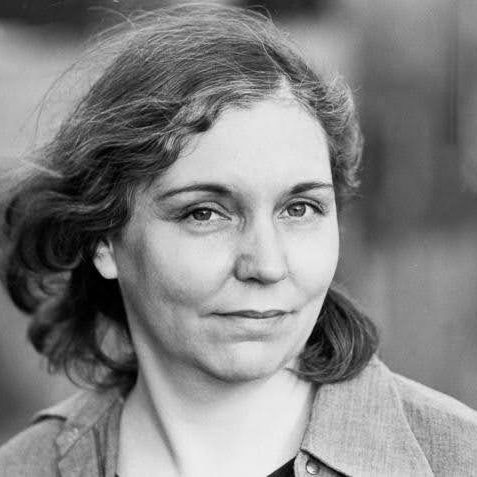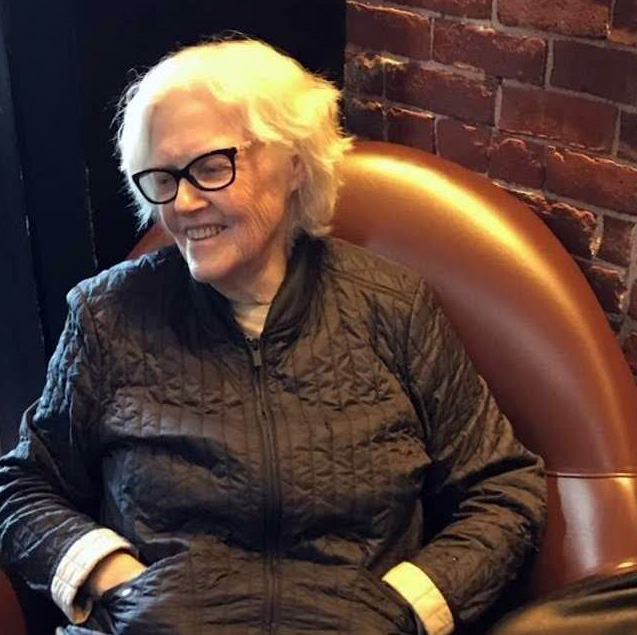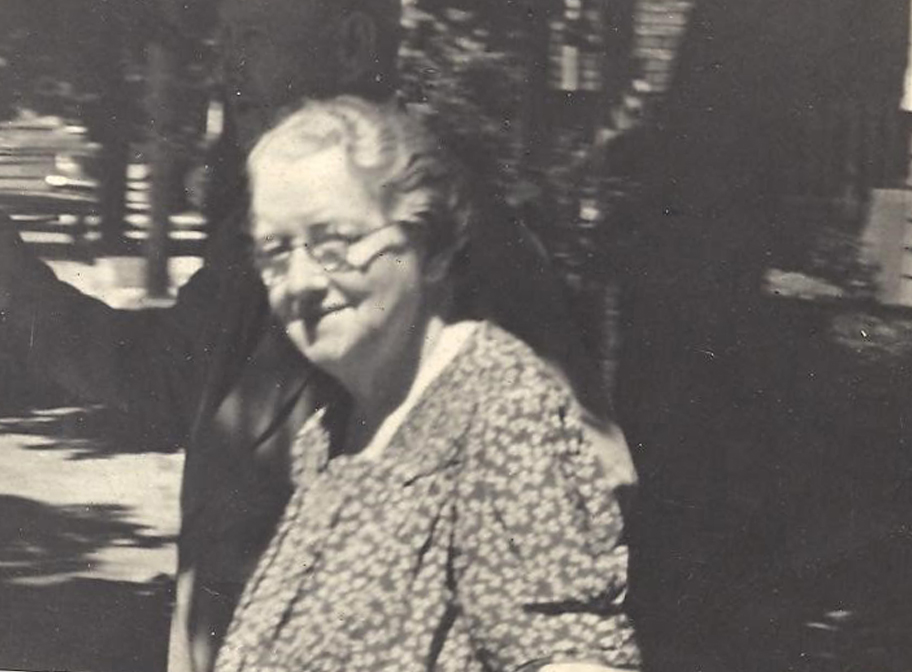Internationally-acclaimed artist Nancy Holt (1938-2014), with family roots in New Bedford that informed her life and art, worked in sculpture, landscape design, video, and other media. Through her artwork, Nancy Holt helped to preserve and share information about the history, vitality, and hardship of everyday life in 20th century New Bedford.
Nancy Holt (1938-2014) was an internationally-acclaimed artist who worked in sculpture, landscape design, video, and other media. Her family roots in New Bedford were important for her life and art.
Nancy Holt was born in Worcester County, Massachusetts to parents E. Louise Holt and Ernest Milton Holt, and was raised primarily in New Jersey. Over her decades-long career, Nancy became known for working in contemporary mediums and artistic genres. She created dozens of major artworks in publicly accessible places including Sun Tunnels (1973-73) in the Great Basin Desert, Utah; Dark Star Park (1979-84) in Arlington County, Virginia; and 30 Below (1979) for the Olympic Organizing Committee’s Environmental Sculpture Program at the 1980 Winter Olympics in Lake Placid, New York. She was also the creator of Spinwinder (1991) for Southeastern Massachusetts University, now UMass Dartmouth.

Nancy’s father, Ernest Holt, was raised in New Bedford, the son of Samuel Holt, head of the Weaving and Designing department at the New Bedford Textile School between 1900-1938. When she was commissioned to create the public artwork Spinwinder for the Massachusetts One Percent for Art Program, Nancy created a tribute to her grandfather and to the area textile industry. Writing about the work, Nancy reflected on childhood visits to New Bedford, where her grandfather told her about the history of regional textile manufacture, including the diverse community of immigrants that moved to the area to work in the industry.
She also remembered seeing early 20th century images of child laborers in the local mills. “My head was spinning with these recollections of the somber, yet strangely irresistible, textile mills when I visited the university campus in 1988 to look at several possible sculpture sites,” she wrote (Holt, “Spinwinder” in Nancy Holt 142). These ideas led Nancy to create a sculpture that included spools, tubing “spindles,” and a rotating element, all reminiscent of textile machinery. She embedded a number of historical artifacts from the regional textile industry in the foundation of the sculpture. Nancy also made artwork about the life of her aunt Ethel Holt, who lived at 39 Locust Street in New Bedford. In a video artwork and artist book, Nancy documented the life and eventual decline of Ethel’s body and home, told through letters and interviews between the artist and her aunt. Aunt Ethel’s life ended tragically after being exploited and abused by her caretaker—a story that is documented in Nancy Holt’s book Ransacked (1980).
Through her artwork, Nancy Holt helped to preserve and share information about the history, vitality, and hardship of everyday life in 20th century New Bedford.
Nancy Holt: Massachusetts was on display November 11, 2021 – January 23, 2022 at UMass Dartmouth Main Campus and Star Store Campus: https://www.umassd.edu/cvpa/universityartgallery/exhibitions/2021/nancy-holt.html.
Dr. Rebecca Uchill, Former Director of Community Engagement Initiatives and Lecturer at the College of Visual & Performing Arts, University of Massachusetts Dartmouth
Information from
-
“Biography: Nancy Holt.” Holt/Smithson Foundation, 2021, https://holtsmithsonfoundation.org/biography-nancy-holt.
-
Claire T. Carney Library Archives & Special Collections, University of Massachusetts Dartmouth.
-
Holt, Nancy. Nancy Holt: Sightlines. Edited by Alena J. Williams. Berkeley: University of California Press, 2011.
-
Katz, Leandro. “Nancy Holt on a NYC rooftop.” October 1977. Holt/Smithson Foundation, licensed by Artists Rights Society (ARS) New York. Photograph.
-
Nancy Holt Estate Records, circa 1960-circa 2001. Archives of American Art, Smithsonian Institution.





